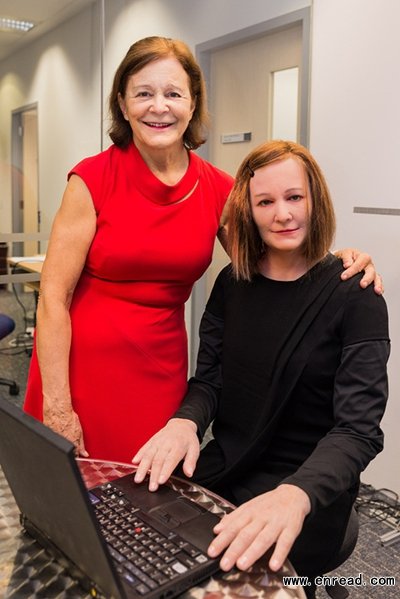| ||||||||||||||||||||||||||||||||||||||||
|
The world's most human-like robot has begun work as a university receptionist as scientists predict the new technology will eventually provide childcare and offer friendship to lonely elderly people.
世界上最逼真的人形机器人“纳丁”已经开始了她作为大学接待员的工作。科学家预计这种机器人最终将能承担保姆和护工的工作,为幼儿和孤寡老人提供服务。
 With her soft skin and flowing brunette hair, Nadine does not only meet and greet visitors, smile, make eye contact and shake hands, but she can even recognise past guests and spark up conversation based on previous chats.
Unlike conventional robots, Nadine has her own personality, mood and emotions. She can be happy or sad, depending on the topic.
Powered by intelligent software similar to Apple's Siri or Microsoft's Cortana, she is the brainchild of scientists at the Nanyang Technological1 University in Singapore and is based on her creator Prof Nadia Thalmann.
Prof Thalmann, the director of the Institute for Media Innovation who led the development of said robots such as Nadine are poised2 to become more visible in offices and homes in future.
"Robotics technologies have advanced significantly over the past few decades and are already being used in manufacturing and logistics," she said.
'As countries worldwide face challenges of an aging population, social robots can be one solution to address the shrinking workforce3, become personal companions for children and the elderly at home, and even serve as a platform for healthcare services in future.
"Over the past four years, our team at NTU have been fostering cross-disciplinary research in social robotics technologies -- involving engineering, computer science, linguistics4, psychology5 and other fields -- to transform a virtual human, from within a computer, into a physical being that is able to observe and interact with other humans."
点击  收听单词发音 收听单词发音
|
||||||||||||||||||||||||||||||||||||||||
上一篇:虚拟现实技术有望在2016年爆发 下一篇:2016年十大科技动向 |
||||||||||||||||||||||||||||||||||||||||
- 发表评论
-
- 最新评论 进入详细评论页>>



